PFT
Equipment for pulmonary function testing and pulmonary screening from the 1920s-1980s is featured.


Overview
This gallery features equipment for pulmonary function testing and pulmonary screening from the 1920s-1980s.
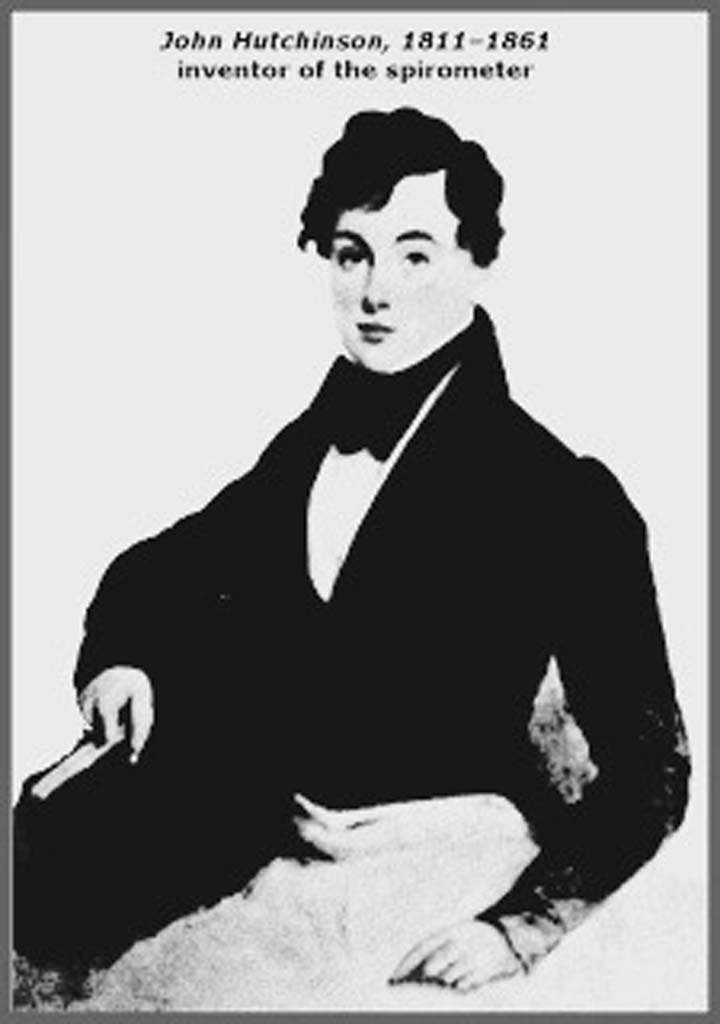
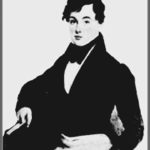
John Hutchinson
The invention of the modern spirometer is credited to John Hutchinson of England. In 1846, Hutchinson published an article on his study conducted on 2,130 individuals to measure vital capacity. He is credited with coining the term spirometer.
Image from Hardluck Asthma
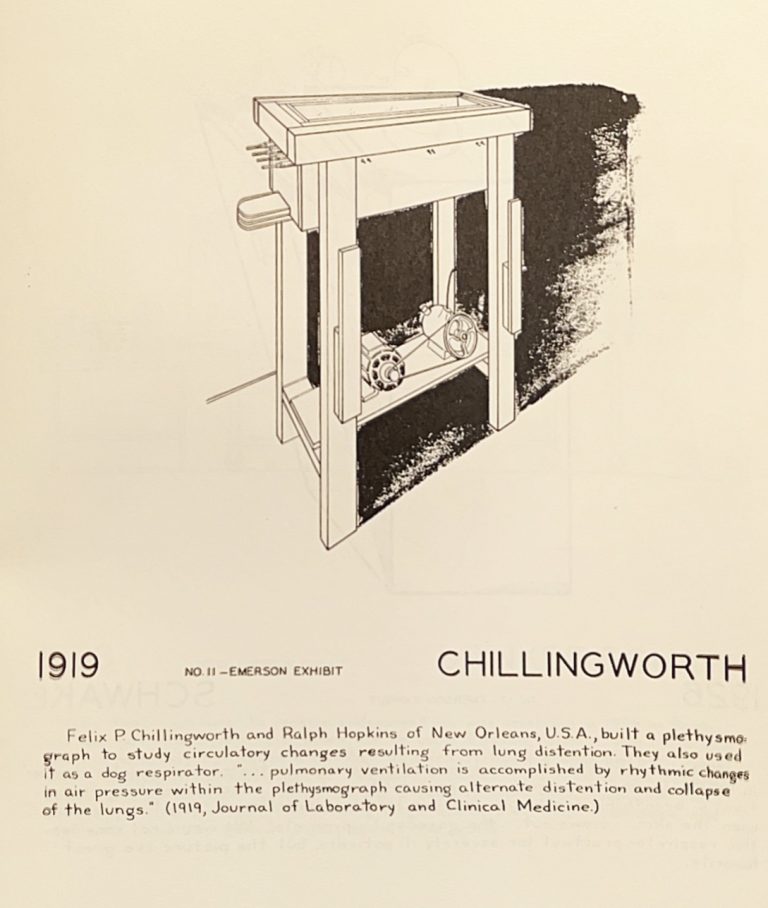
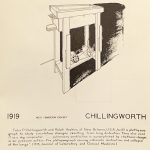
1919 Plethysmograph
In 1919, Felix Chillingworth and Ralph Hopkins on New Orleans, LA built a plethysmograph to study circulatory changes resulting from lung distention.
Image from Emerson's "The Evolution of Iron Lungs"
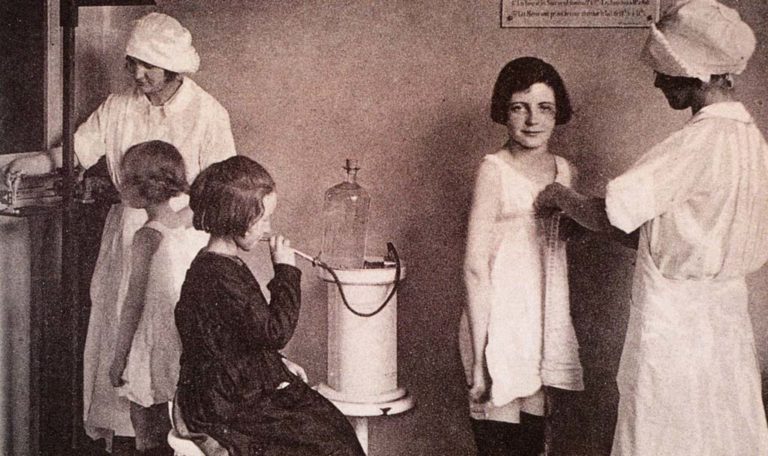
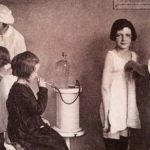
1920s Pulmonary Screenings at School
In France, public health officials at the beginning of the century instigated preschool and school medical examinations. The school was often the place where working class children would have their first medical evaluation. Public health stations also evaluated the children. Childhood diseases quickly spread through grade schools as infected children came in contact with other children. Ascertaining who had been vaccinated and who had the common childhood diseases became important school public health policies. An important part of the physical exam in the 1920s and 30s was measurement of lung capacity as shown here.
Image from a collection shared by Aracely Bigelow
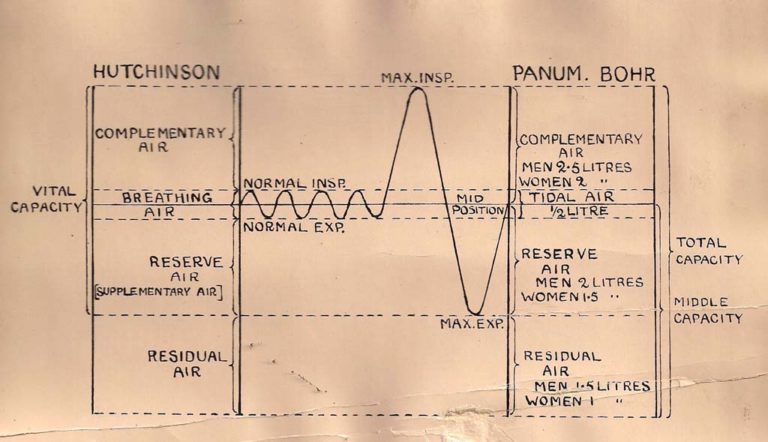
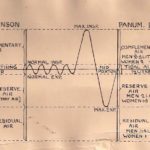
1924 Spirogram
This 1924 drawing compares Hutchinson's spirogram values and terms with those of Panum and Bohr.
Image from Steve and Mary DeGenaro
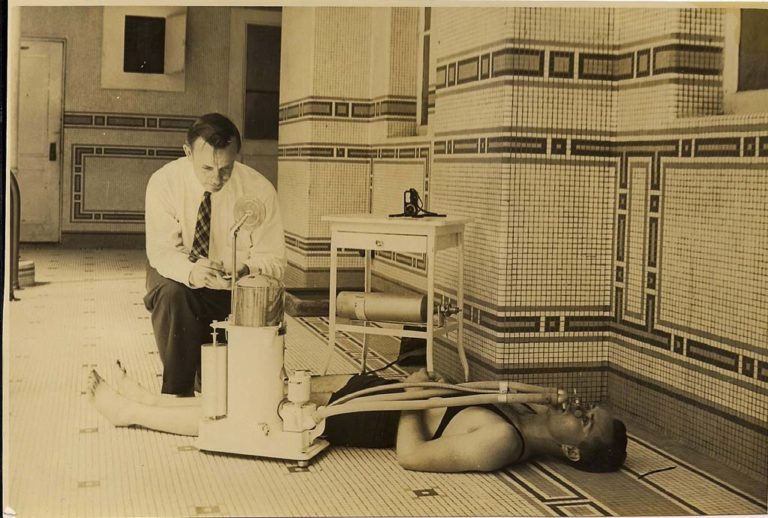
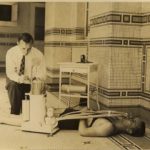
PFT of swimmer
The pulmonary function of a swimmer was evaluated poolside in this 1930s photo.
Image from Steve and Mary DeGenaro
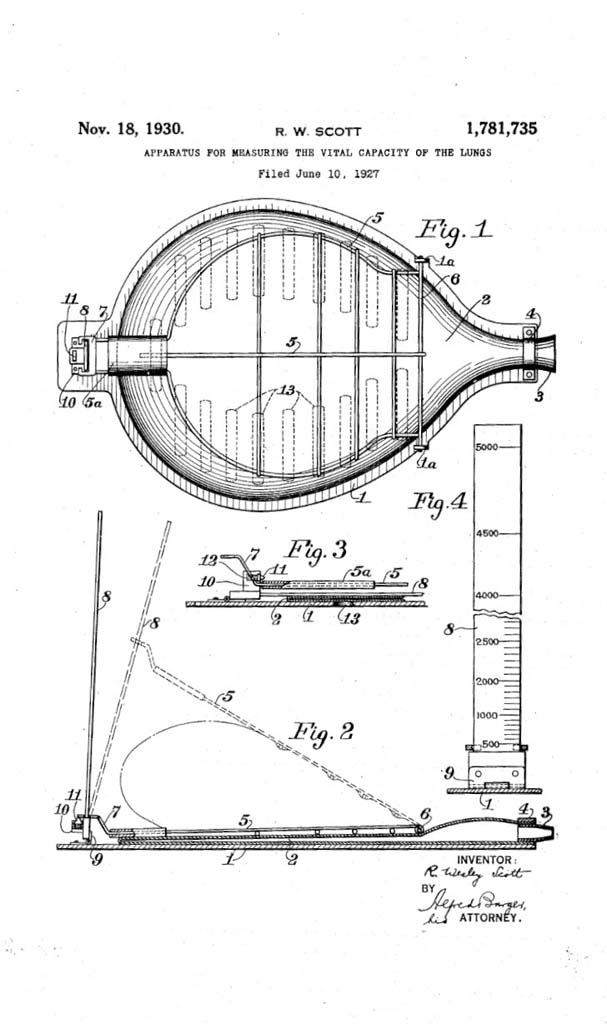
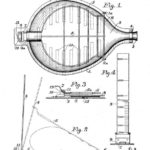
Scott's VC Apparatus
In June of 1927, Roy Wesley Scott applied for a patent for "Apparatus for Measuring the Vital Capacity of the Lungs." The patent was granted on November 18, 1930.
Scott later collaborated with the McKesson Company to produce the McKesson-Scott Vital Capacity Apparatus.
Scott later collaborated with the McKesson Company to produce the McKesson-Scott Vital Capacity Apparatus.
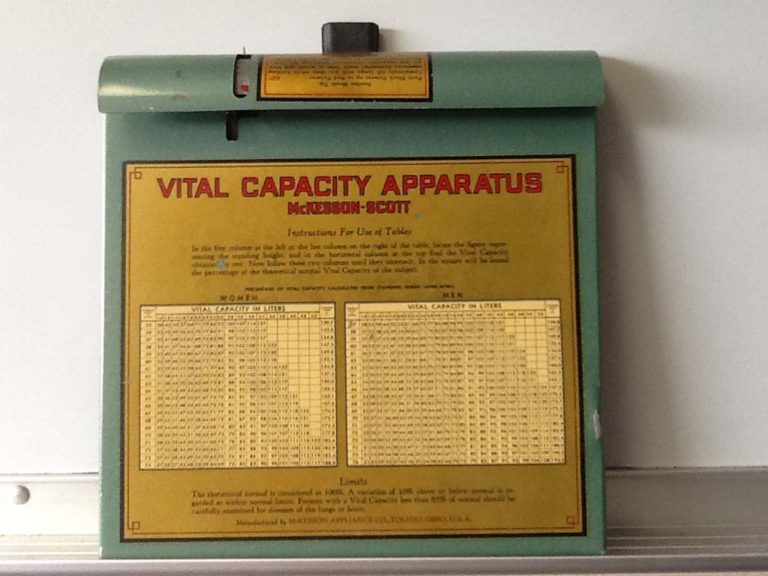
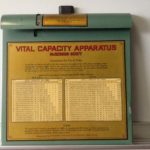
McKesson Scott Vital Capacity Apparatus
The McKesson Scott "Vital Capacity Apparatus" is shown.
Image from Jeff Anderson
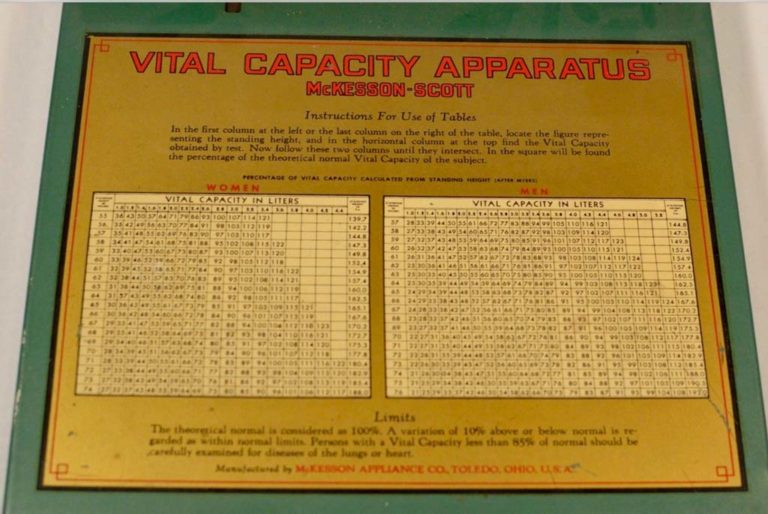
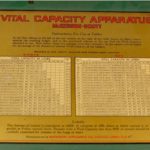
Vital Capacity Apparatus
The face of the McKesson-Scott "Vital Capacity Apparatus" is shown.
Image from Jeff Anderson
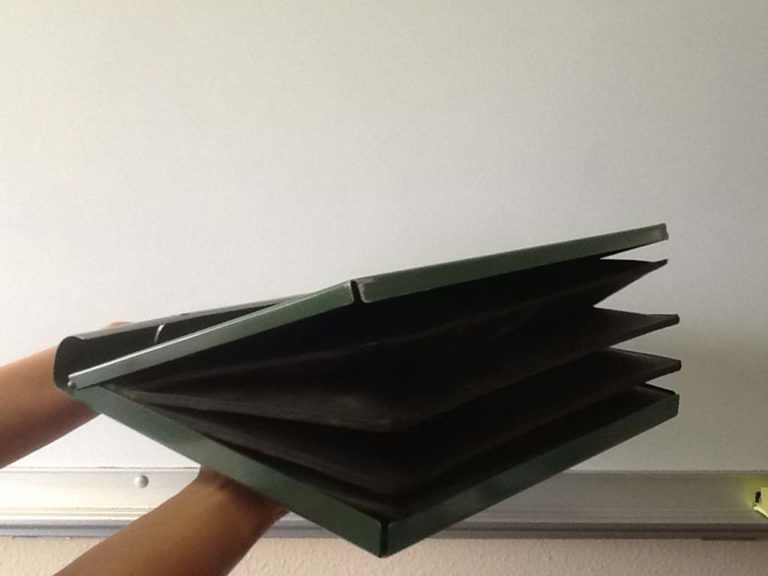
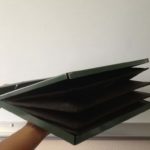
Vital Capacity Apparatus
The McKesson Scott "Vital Capacity Apparatus" is shown in the opened position. The device was often used in physicians' offices for screening purposes.
Image from Jeff Anderson
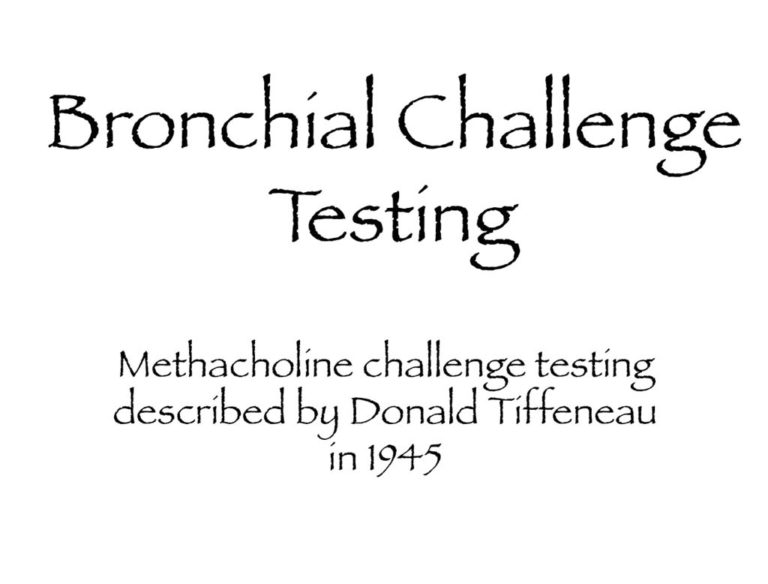
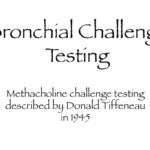
1945 BCT described
Bronchial Challenge Testing (BCT) was first described in 1945. Donald Tiffeneau described methacholine challenge testing as well as several other important new pulmonary function diagnostic tests in the 1940s.
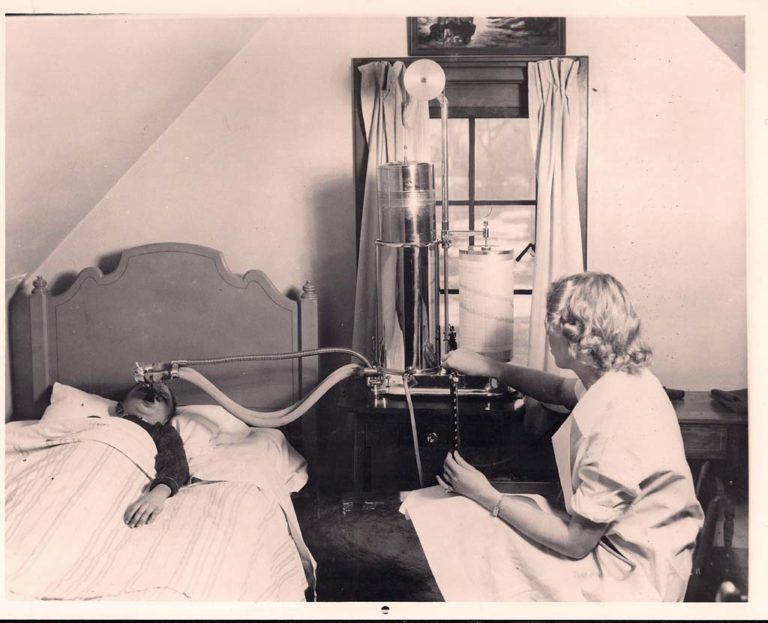
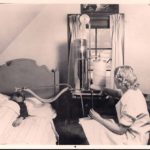
1950s Bedside Monitoring
The Collins Respirometer was used during the 1930s to 1960s. It is shown here at the bedside to monitor pulmonary parameters.
Image from Steve and Mary DeGenaro
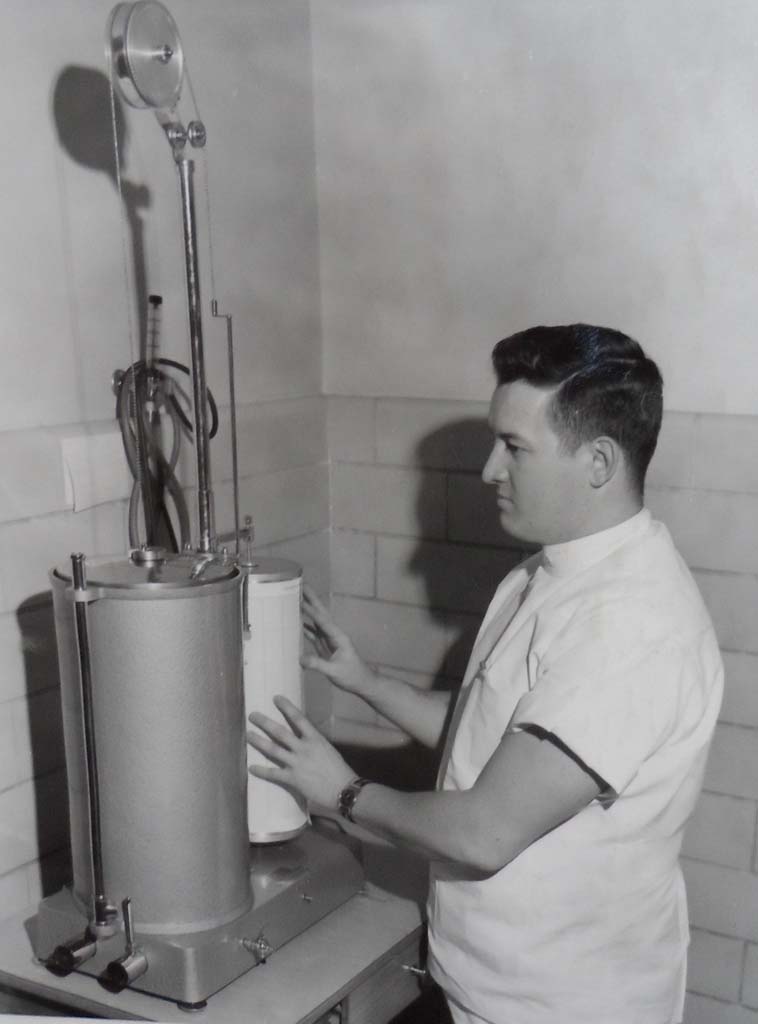
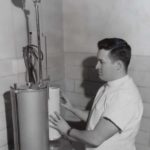
1959 Collins
Charles McKnight, the Director of the Inhalation Therapy Department at Lutheran Hospital, Moline is pictured in this 1959 photo with the hospital's pulmonary function equipment.
Image from Charles McKnight
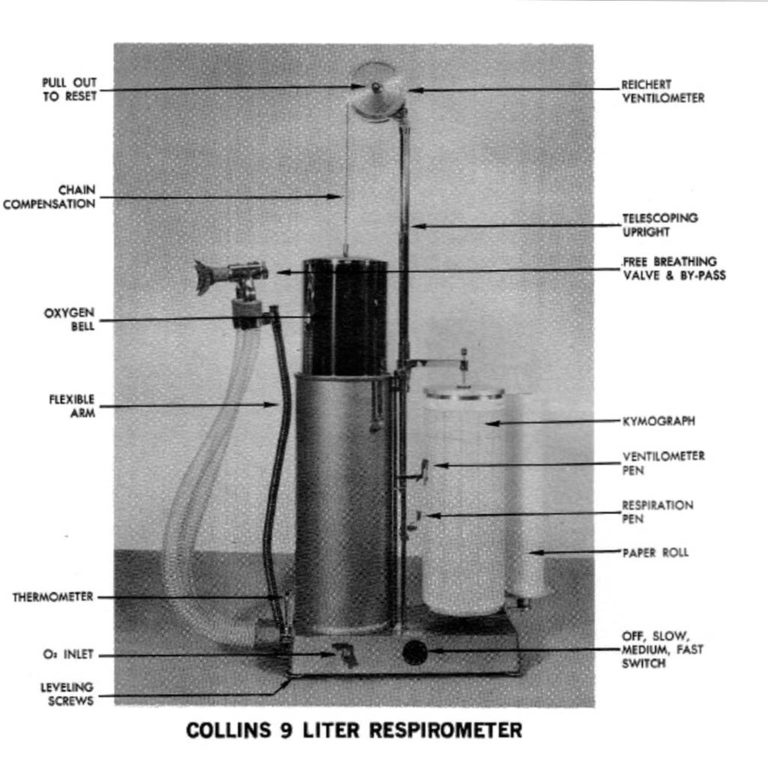
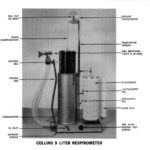
Respirometer Components
The components of the Collins Respirometer are labeled in this image from the 1960s.
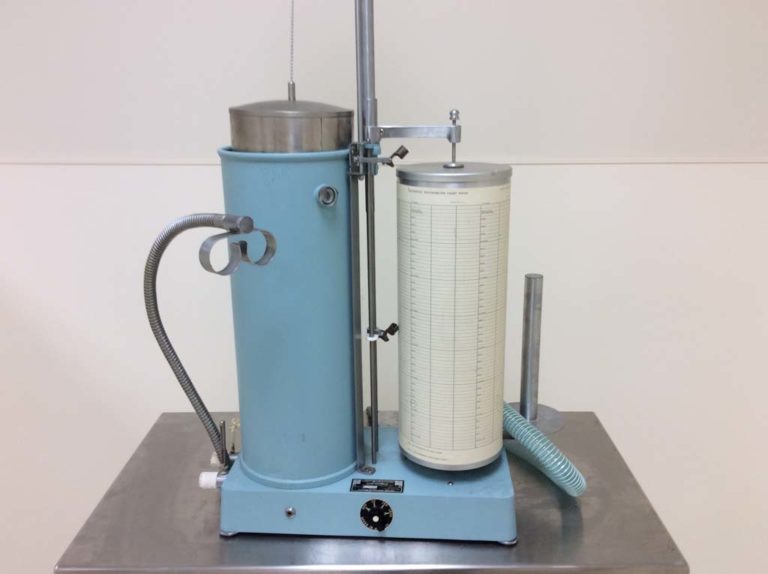
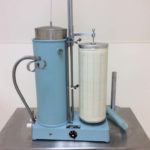
Collins 9L Respirometer
A Warren Collins Respirometer for pulmonary function testing is shown.
Image from William LeTourneau
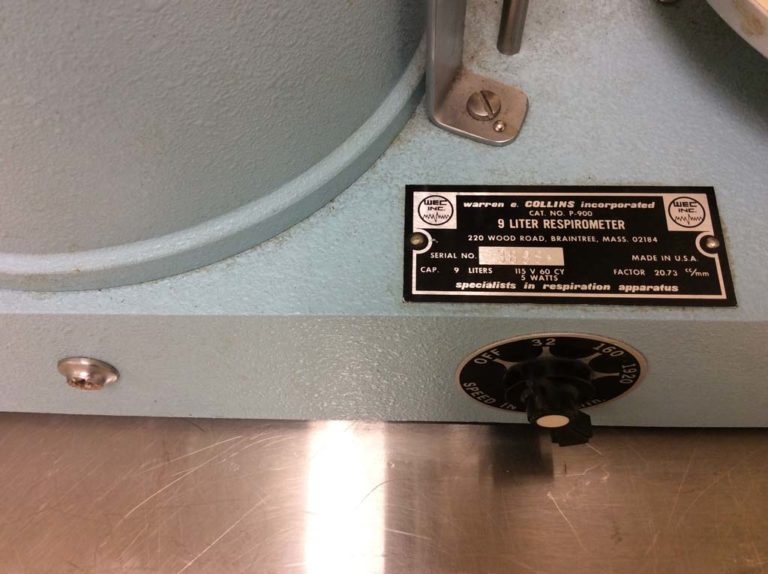
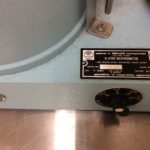
Collins 9 L ID Plate
The identification plate of a Warren Collins 9 Liter Respirometer is shown.
Image from William LeTourneau
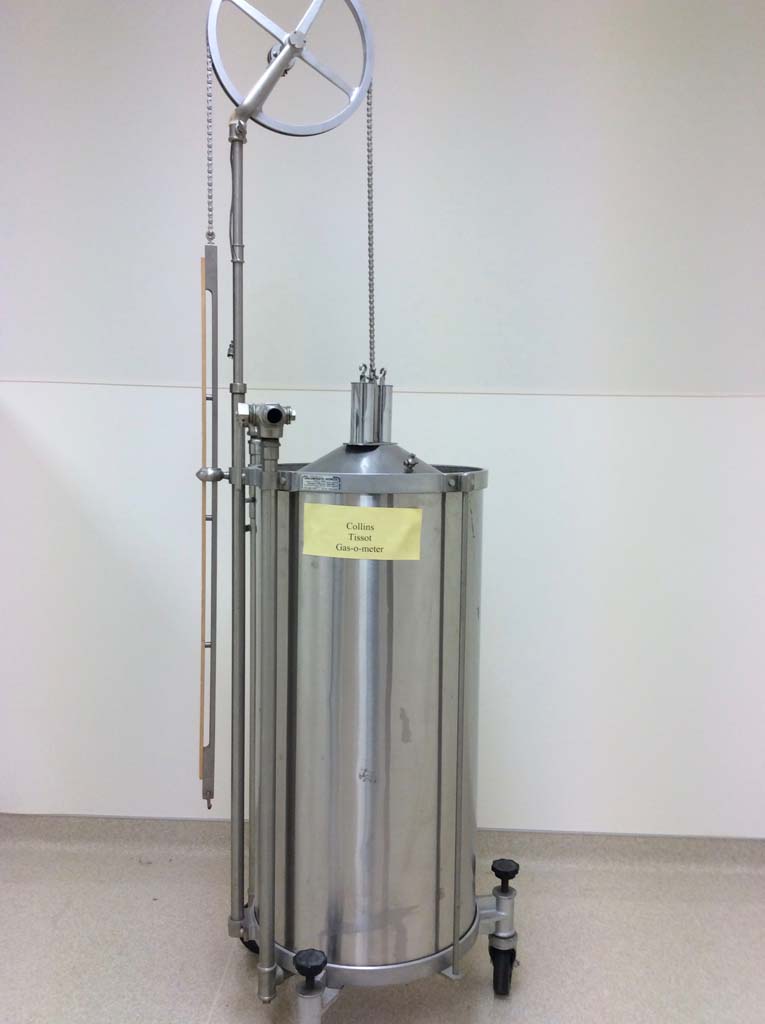
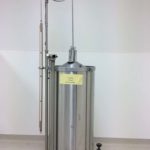
Collins Tissot Gasometer
A stainless steel Collins Tissot gasometer is shown.
Image from William LeTourneau
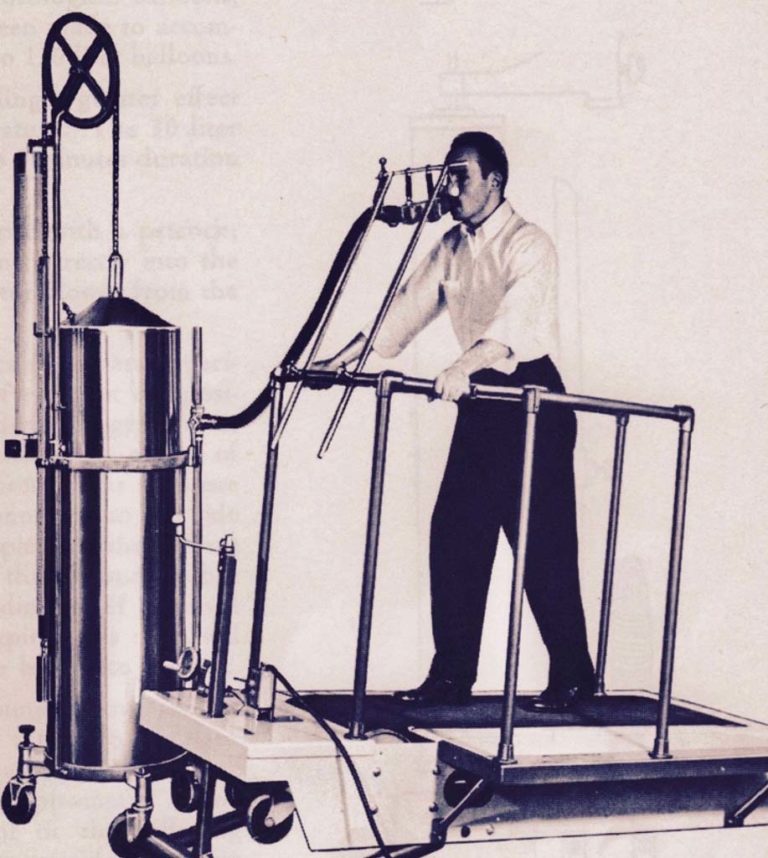
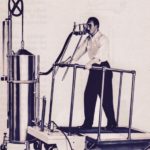
Collins Tissot Gasometer
The Tissot spirometer was first described circa 1904. A Collins Tissot Gasometer is shown in use during exercise testing circa 1965.
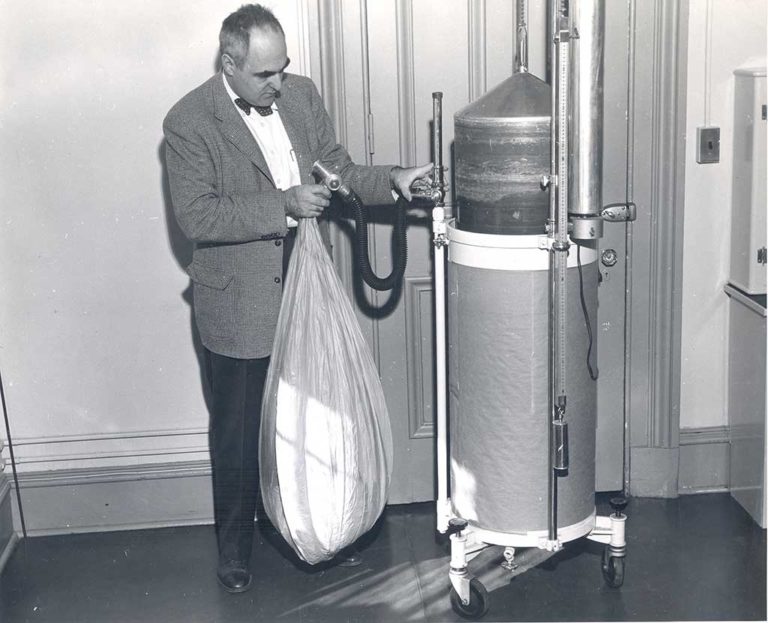
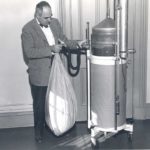
Collins Tissot Gasometer
Dr. Albert Aranson is shown with the Collins Tissot Gasometer.
Image from Robert Aranson, MD
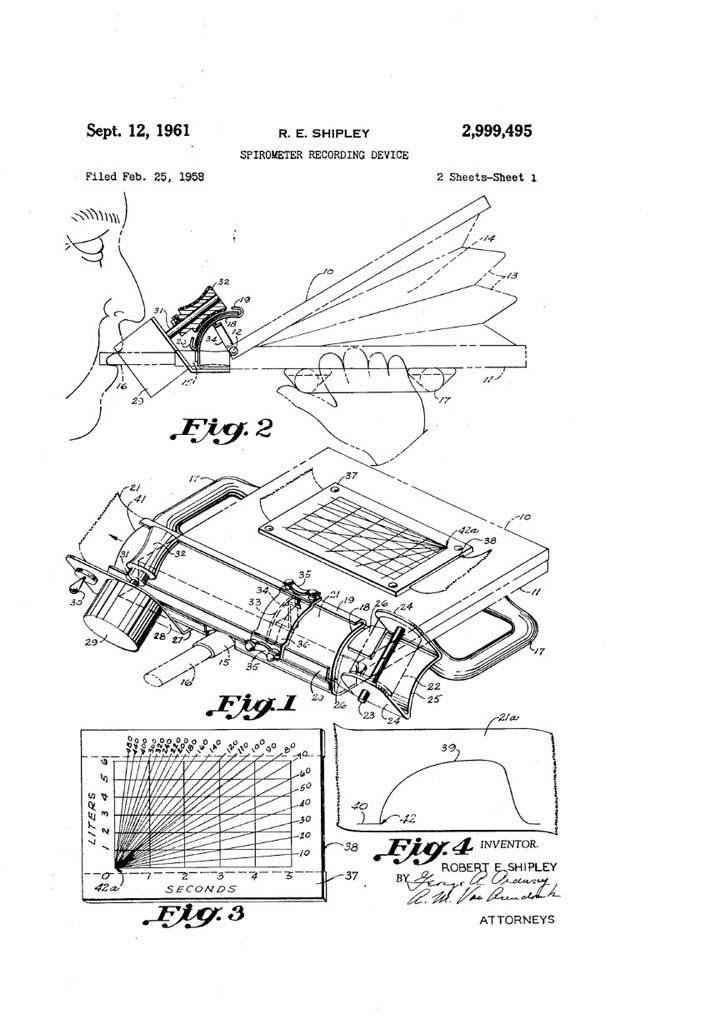
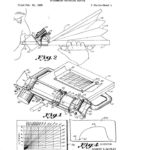
1961 Recording Spirometer
In February 1958, R.E. Shipley applied for a patent for a recording bellows spirometer. The patent was granted September 12, 1961. The device was one of the first units capable of monitoring and recording a timed vital capacity maneuver.
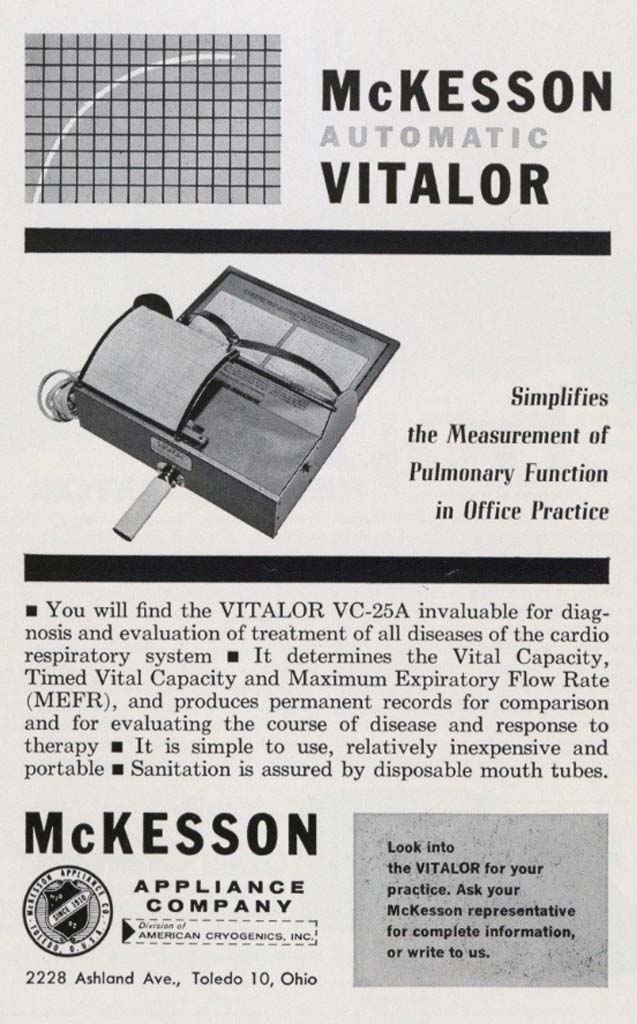
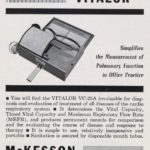
McKesson Vitalor
The McKesson Vitalor is featured in this ad from the October 1965 issue of the INHALATION THERAPY journal.
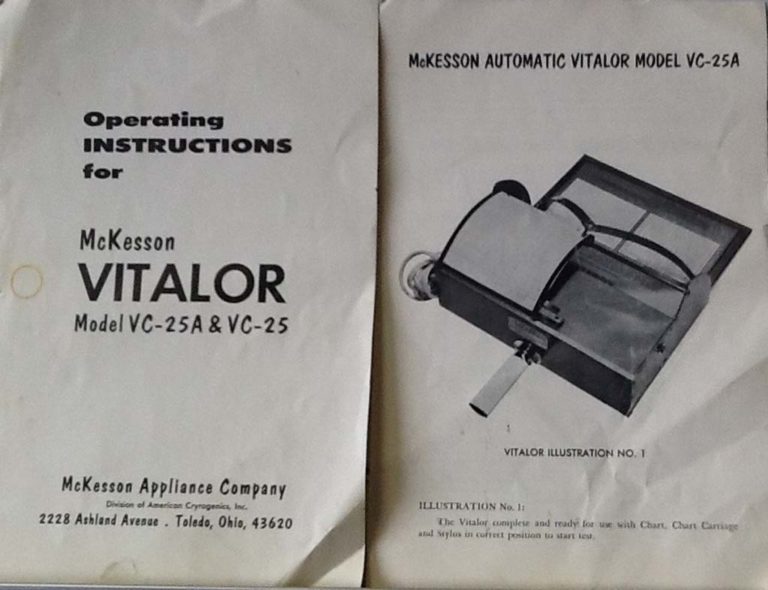
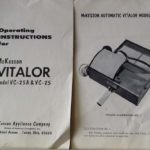
Vitalor Manual
The Operating Manual for the McKesson Vitalor VC 25 is shown.
Image from Jeff Anderson
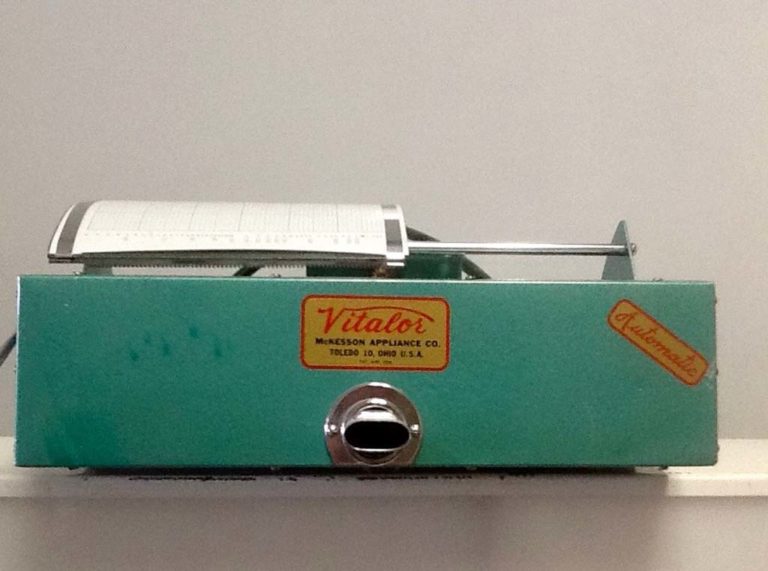
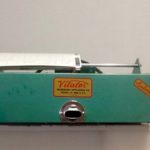
Vitalor front
The front view of a McKesson Vitalor is shown
Image from Jeff Anderson
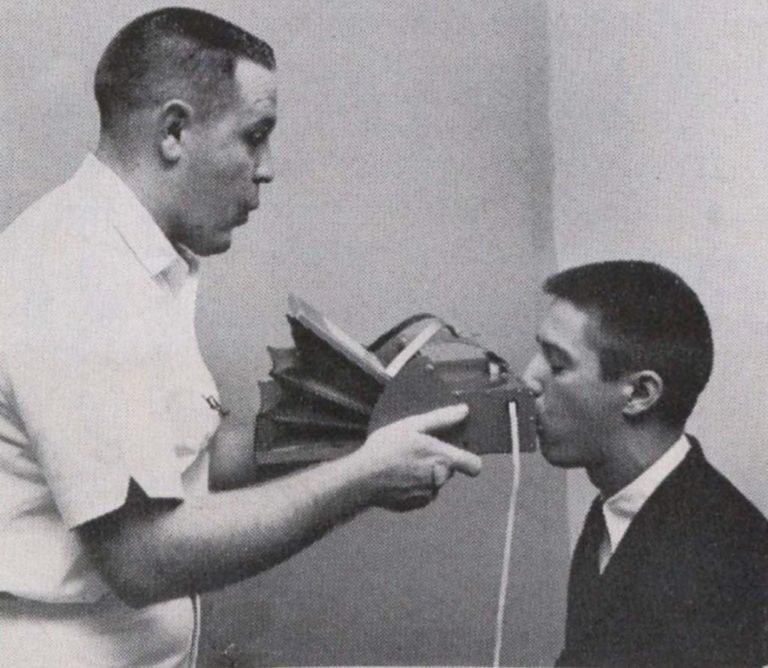
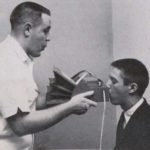
Using the Vitalor
In this photo that appeared in the April 1963 issue of INHALATION THERAPY, Bill Morrison is shown performing a vital capacity maneuver on a patient using the Vitalor. Mr. Morrison was a respiratory therapist from Chicago, Illinois
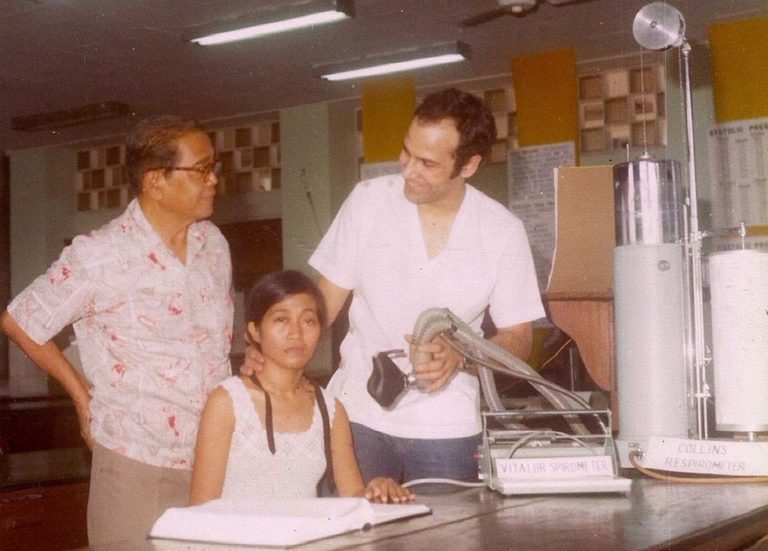
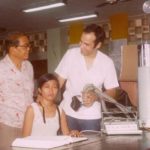
McKesson Vitalor & Collins Respirometer
The McKesson Vitalor Spirometer and Collins Respirometer are shown.
Image from Steve and Mary DeGenaro
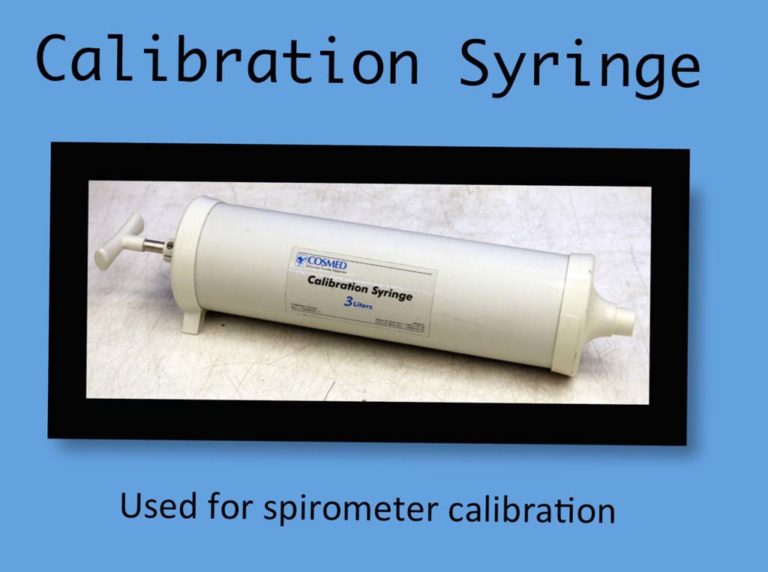
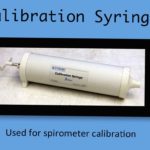
Calibration Syringe
Large syringes with precise volumes are used to calibrate spirometers.
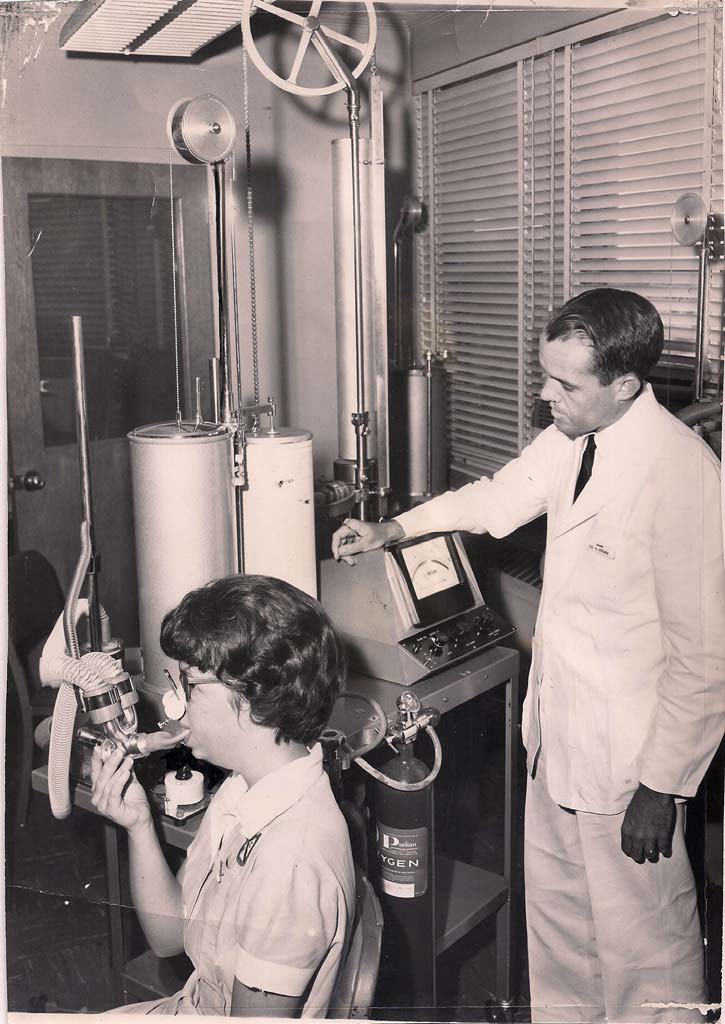
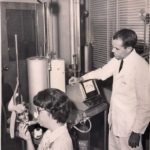
1960s Spirometry
A patient is shown during spirometry testing from the 1960s.
Image from Steve and Mary DeGenaro
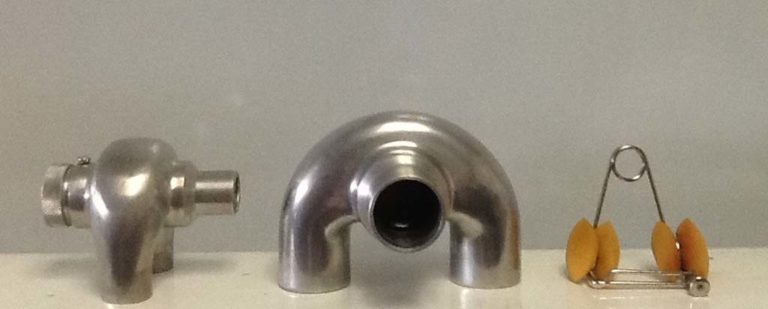
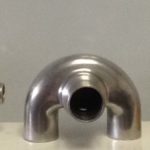
Noseclips and Valves
Essential equipment for PF testing with the Collins is shown.
Image from Jeff Anderson
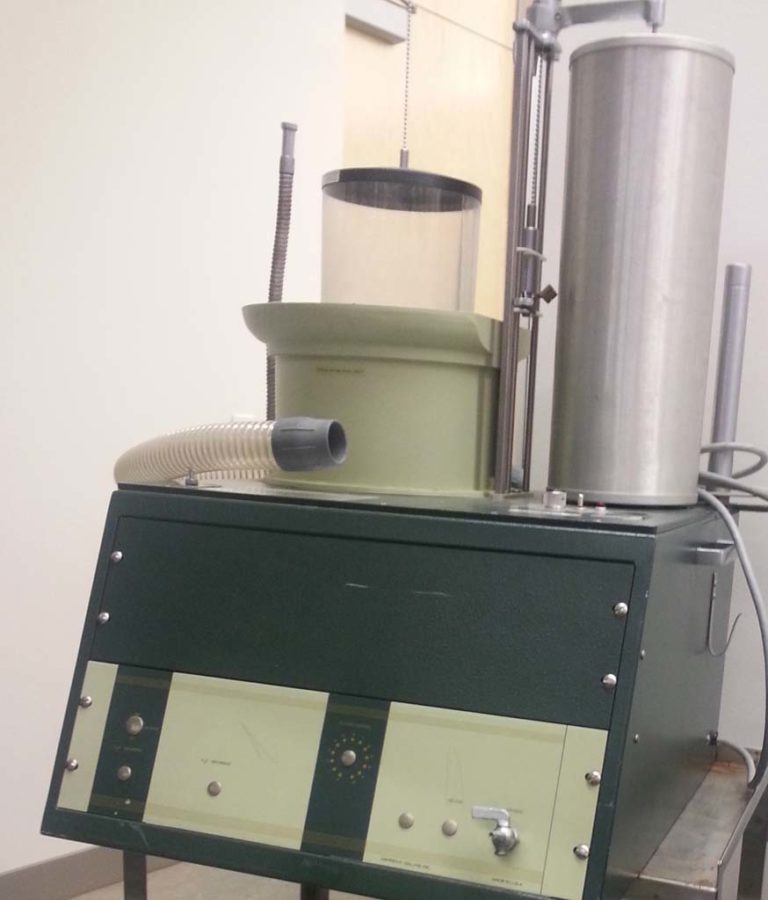
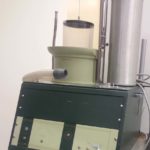
1965 Collins PFT
Collins Pulmonary Function equipment (circa 1965) is shown.
Image from Jim Ciolek
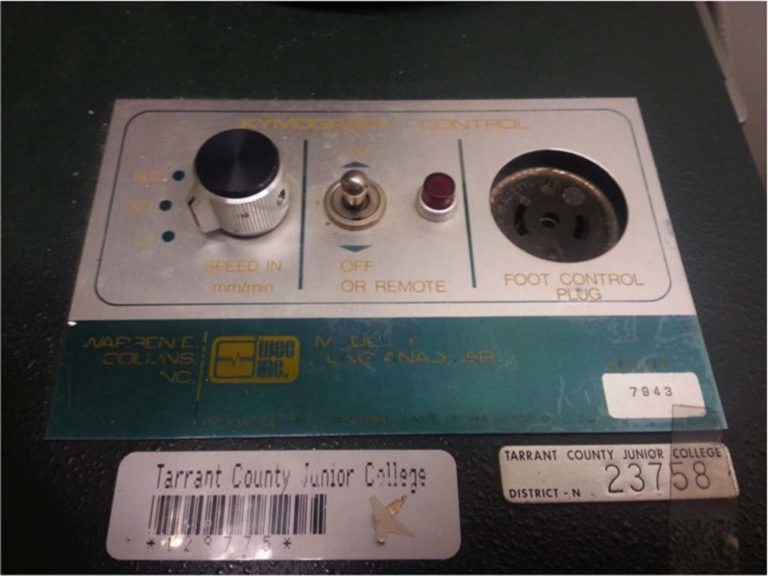
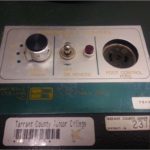
Kymograph Controls
The control box for the Collins kymograph is pictured.
Image from Jim Ciolek
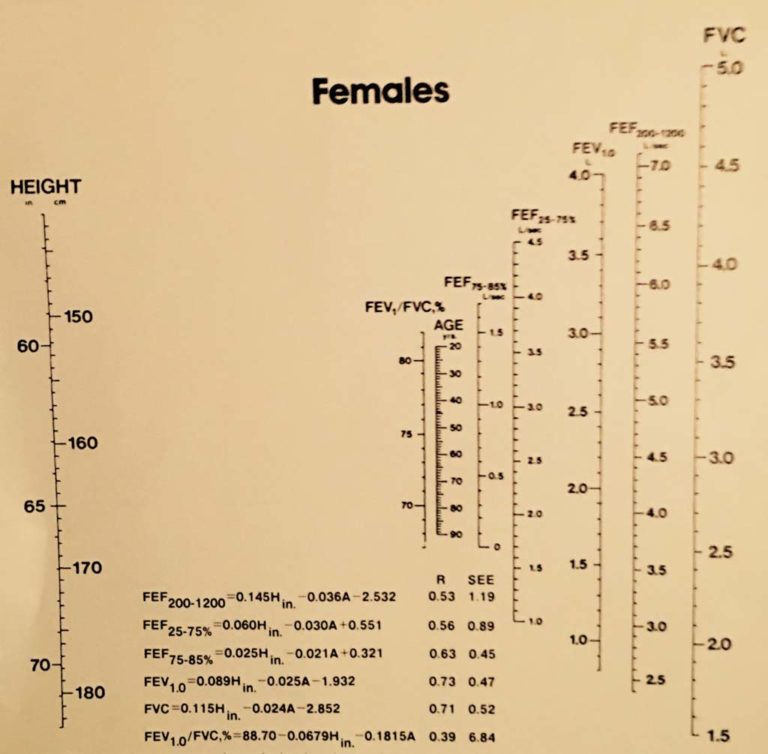
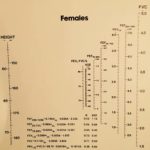
PF Prediction Table
A prediction table for FVC, FEF, and FEV1/FVC for females is shown.
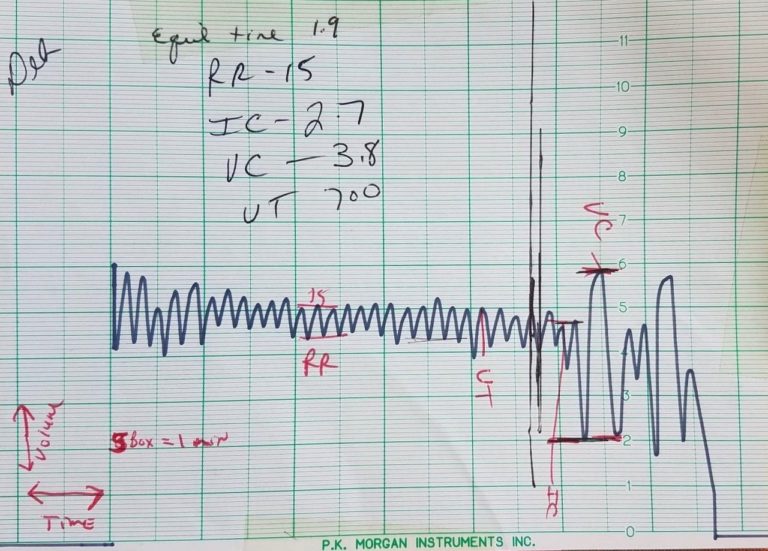
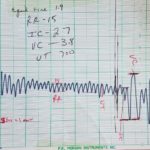
Manual Calculation of PFTs
Pulmonary function tests were manually calculated prior to the mid-1970s.
Image from Deborah Gentile
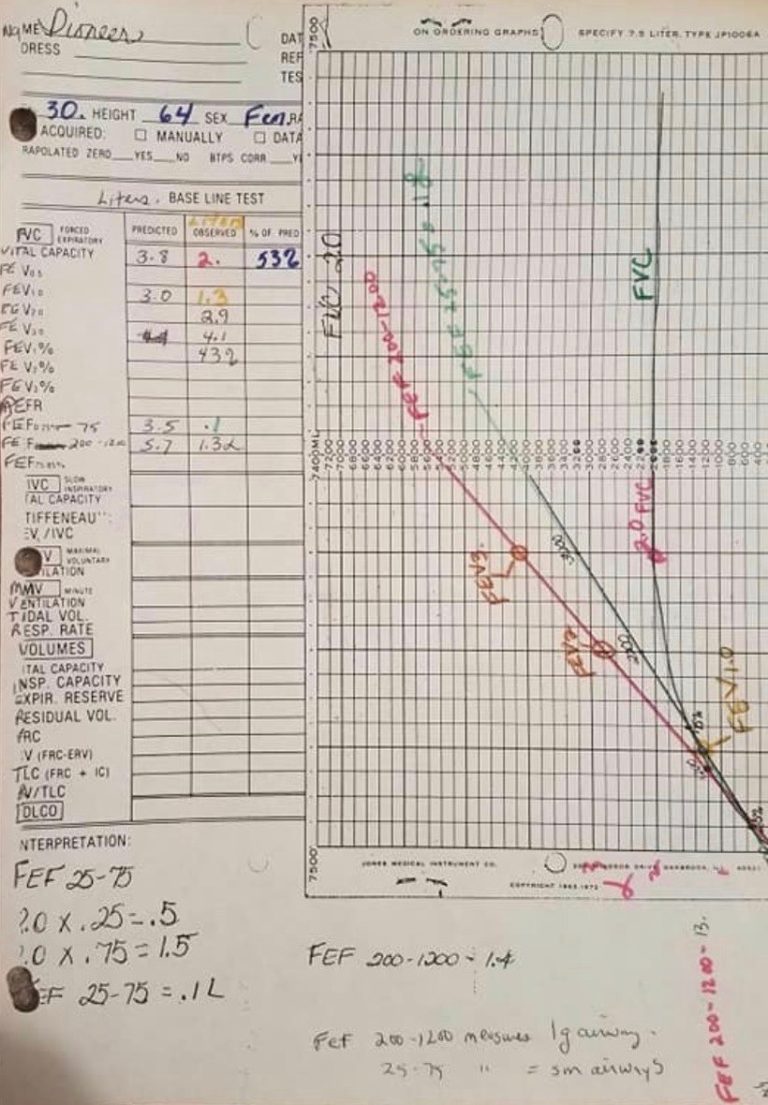
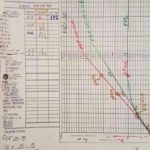
Spirometry results were calculated manually
Manual calculations of spirometry results are shown.
Image from Deborah Gentile
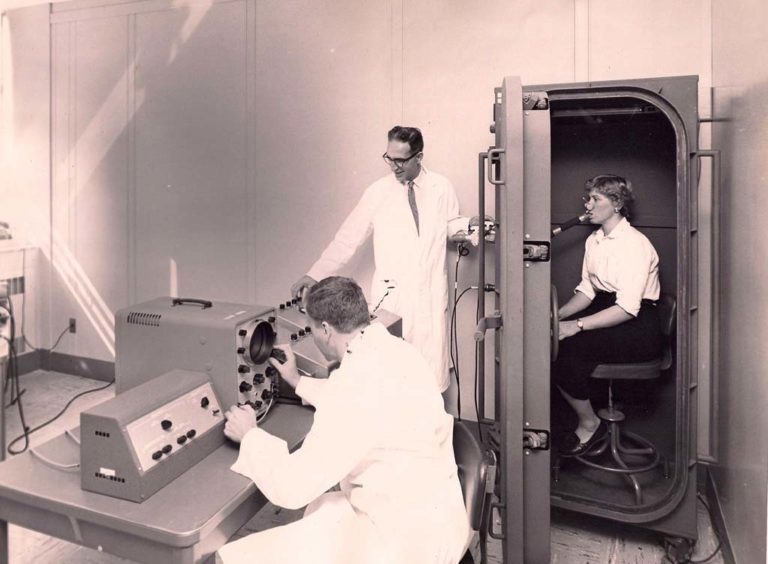
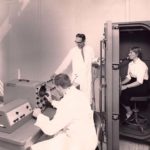
Pulmonary Lab
A pulmonary lab from the early 1970s is shown.
Image from Steve and Mary DeGenaro
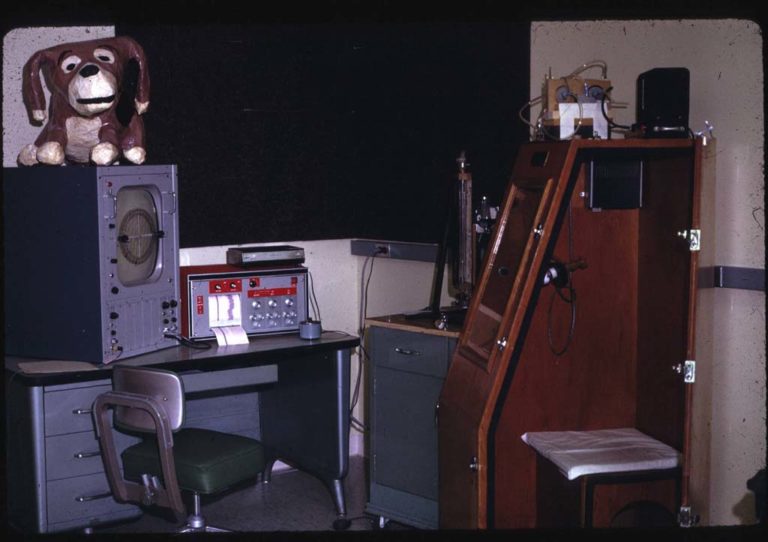
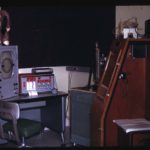
PF Lab
A cardiopulmonary diagnostics lab from the 1970s is shown.
Image from Marvin Lough
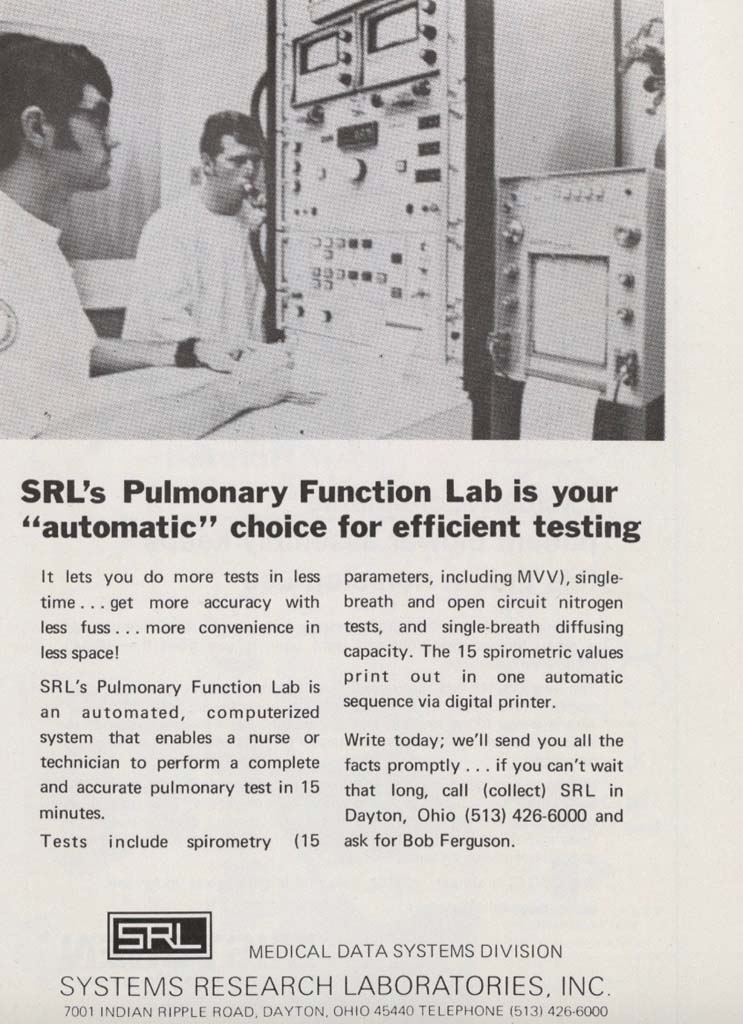
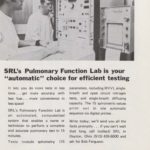
SRL PFT Lab
This ad for the Systems Research Laboratories (SRL) pulmonary function equipment appeared in the December 1970 issue of the INHALATION THERAPY journal.
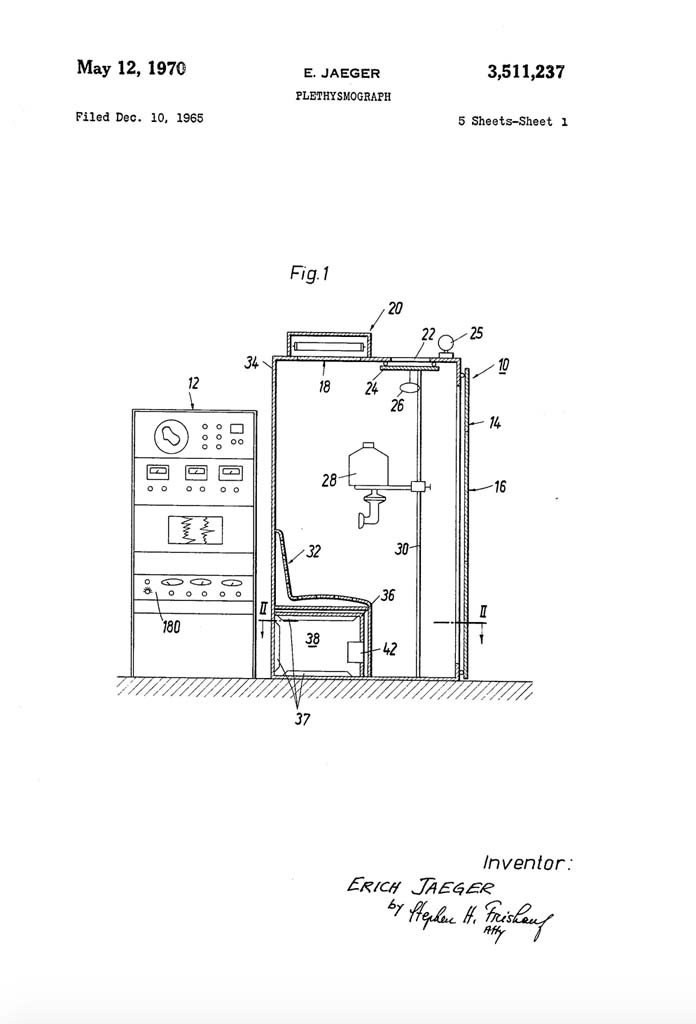
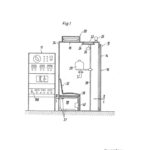
Plethysmograph patent
Erich Jaeger filed a patent application on December 10, 1965 for a "Plethymograph". The patent was awarded on May 12, 1970.
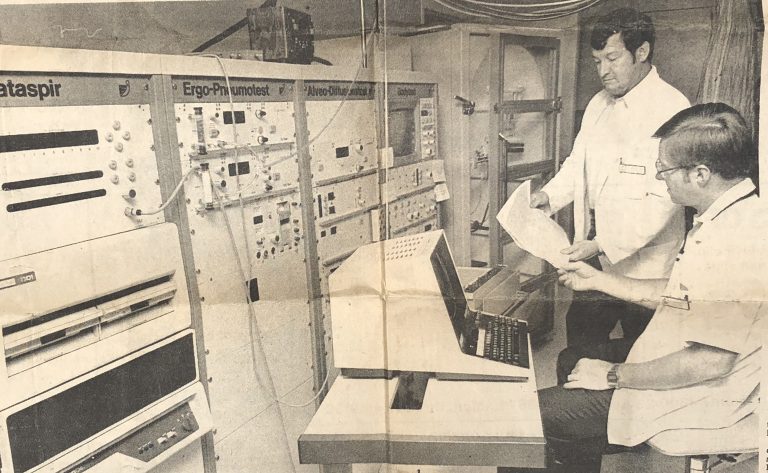
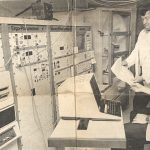
Jaeger PF Lab
The Jaeger PF equipment of the Respiratory Care Center at Lutheran Hospital, Moline, Illinois circa 1976 is shown.
Image from Charles McKnight
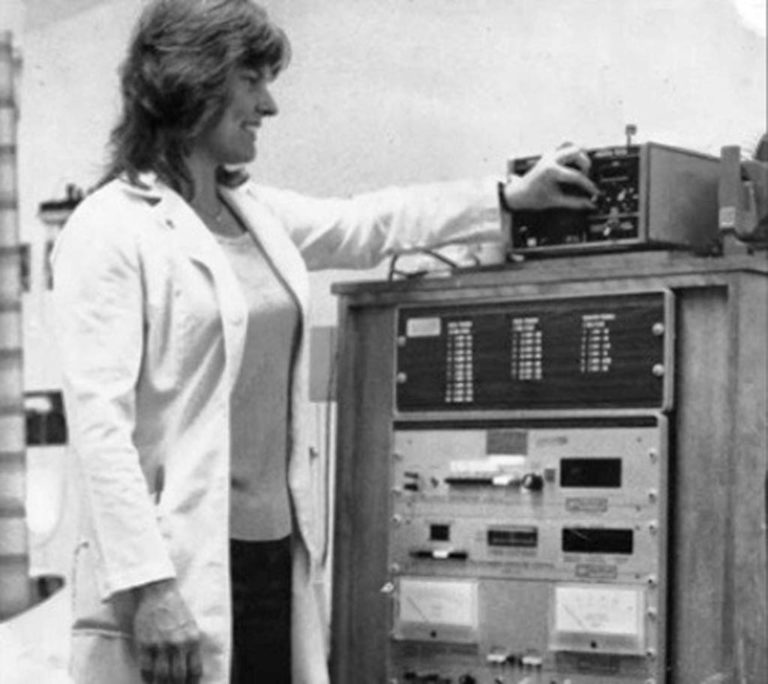
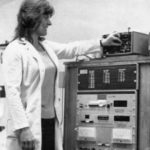
Early 1980s PFT Equipment
In this photo from the early 1980s, Colleen Schabacker is shown adjusting Jaeger equipment in a pulmonary function lab.
Image from Colleen Schabacker

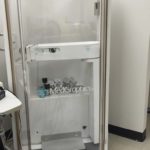
Plethysmograph Chamber
A plethysmograph chamber is shown.
Image from Marby McKinney
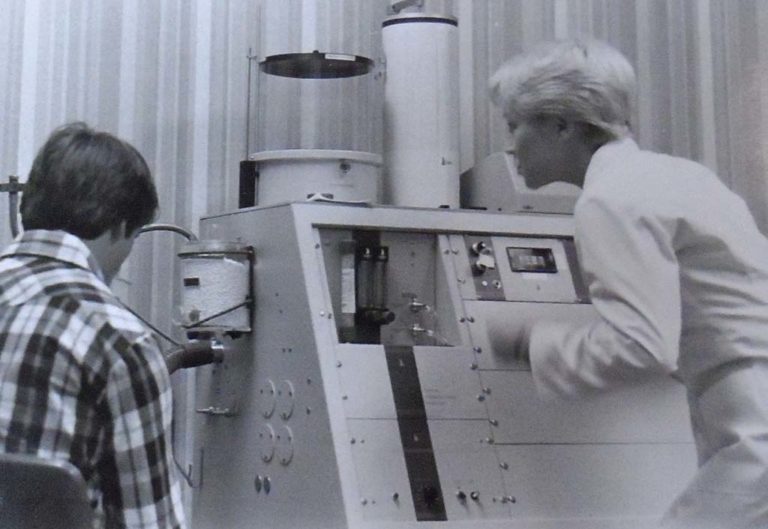
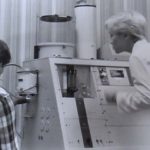
1970s Spirometry
Technical knowledge and cheerleading skills were required to successfully coach a patient through a pulmonary function test.
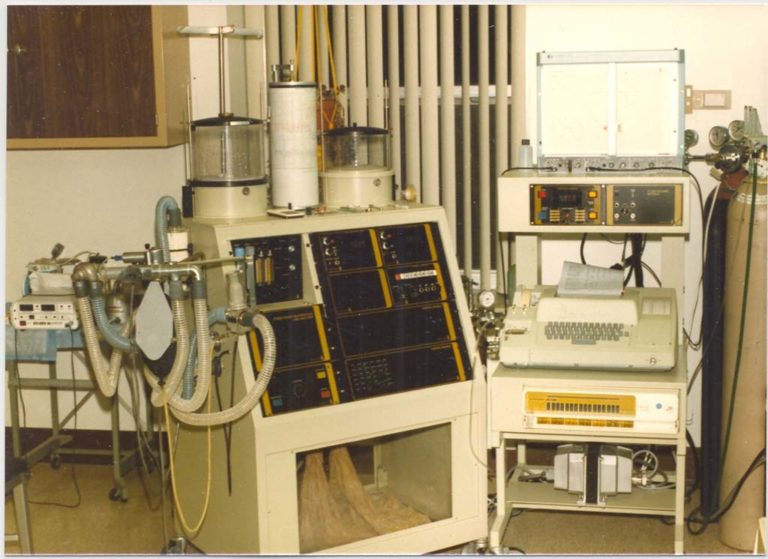
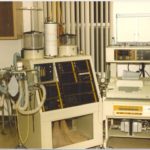
Collins Maxi-Modular System
This image of the Collins Maxi-Modular system was from the late 1970s.
Image from James Sullivan
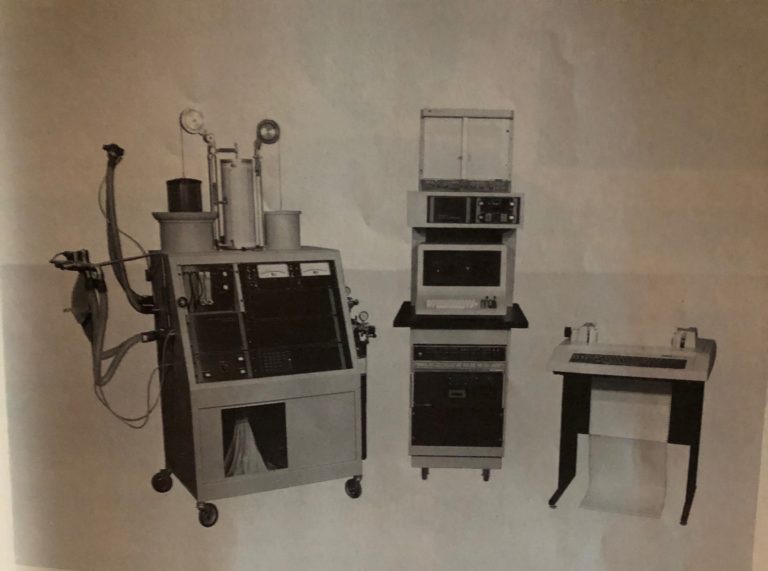
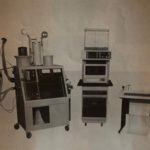
Collins Maxi System
This image of the Collins Maxi-system appeared in the January 1977 issue of the RESPIRATORY CARE journal.
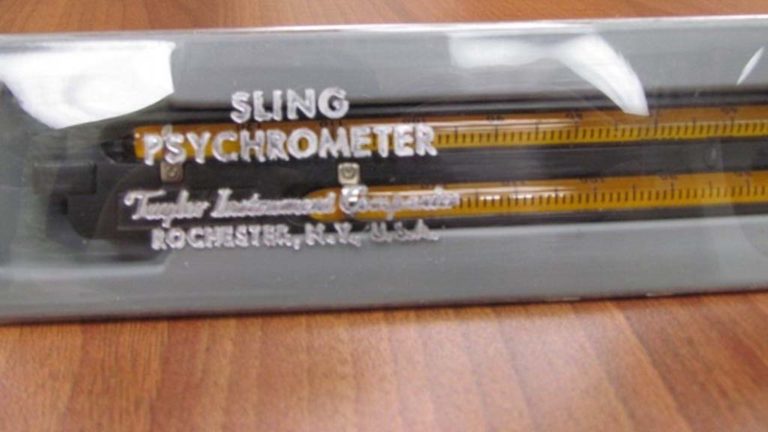
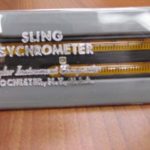
Sling Psychrometer
The psychrometer was used to measure ambient relative humidity in the pulmonary function testing lab. A wet bulb and a dry bulb thermometers were manually spun for a designated period. The temperature variation between the two thermometers was matched to a calibrated scale to determine the relative humidity.
Image from Kerry George
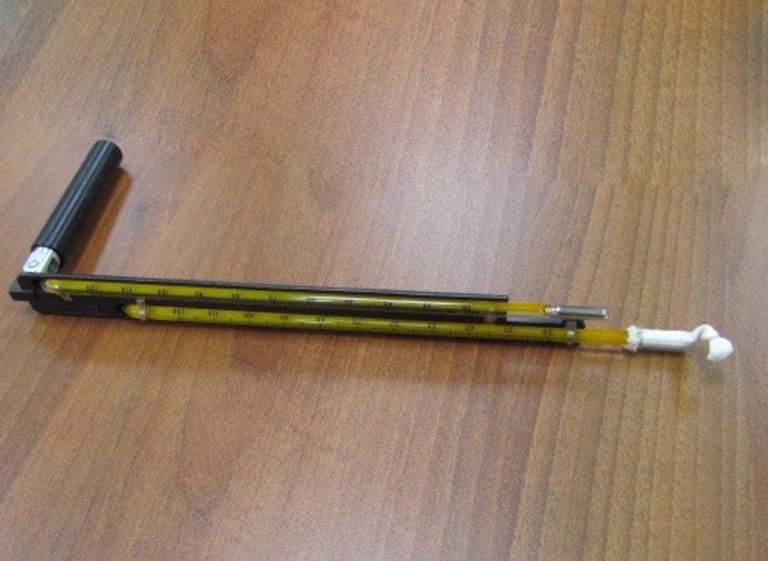
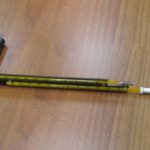
Sling Psychrometer
The psychrometer, removed from the case, shows the thermometers and handle of the device. One thermometer remains dry while the sock on the second is dampened. Holding the device by the handle, the thermometers are spun repeatedly in the air. A change between the dry bulb thermometer and the wet bulb thermometers occurs. The variation in temperatures is noted on a calibration scale that correlates to relative humidity.
Image from Kerry George
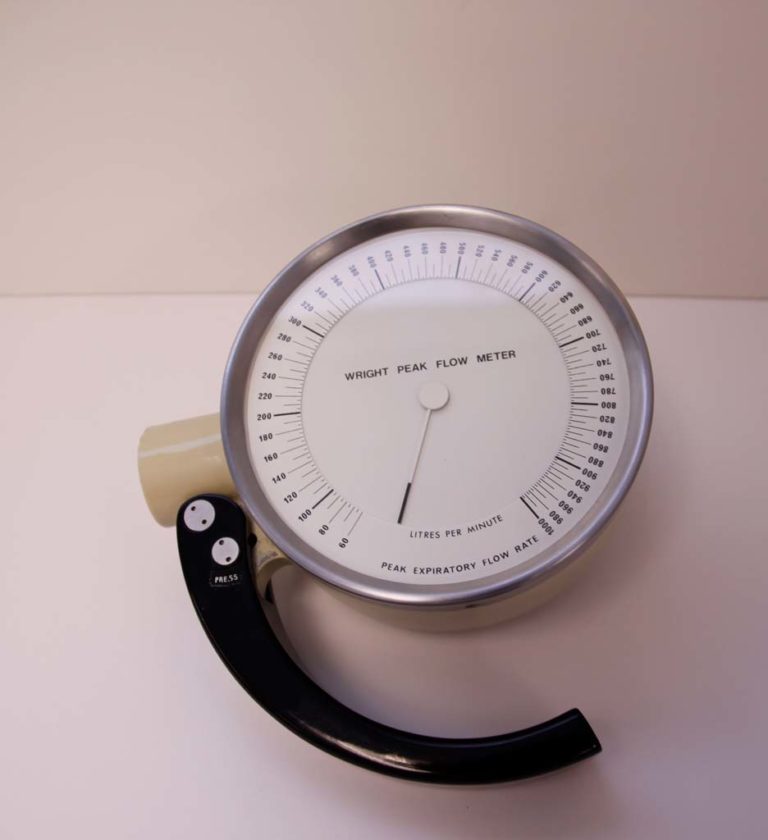
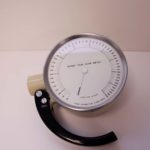
Wright Peak Flow Meter
A Wright peak flow meter from 1956 is shown.
Image from Illinois Central College Archives, 1999
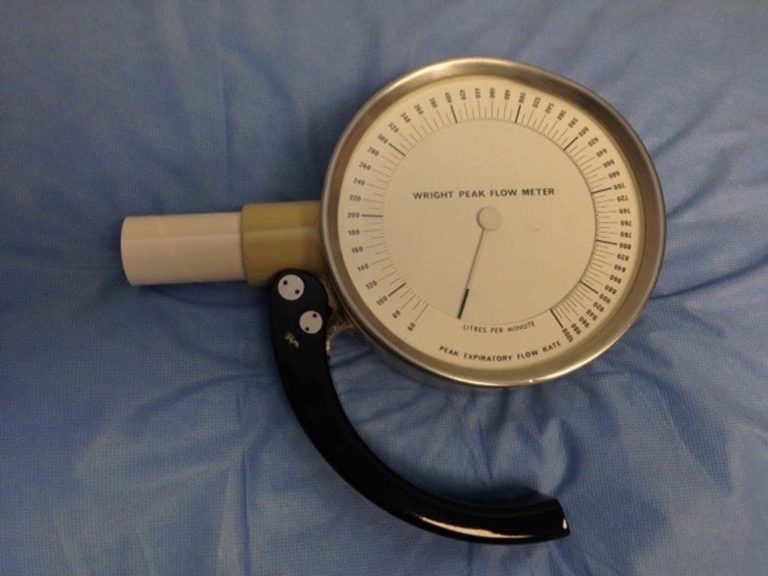
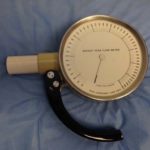
Wright Peak Flowmeter
A Wright Peak Flow meter is pictured.
Image from Glenn Tammen
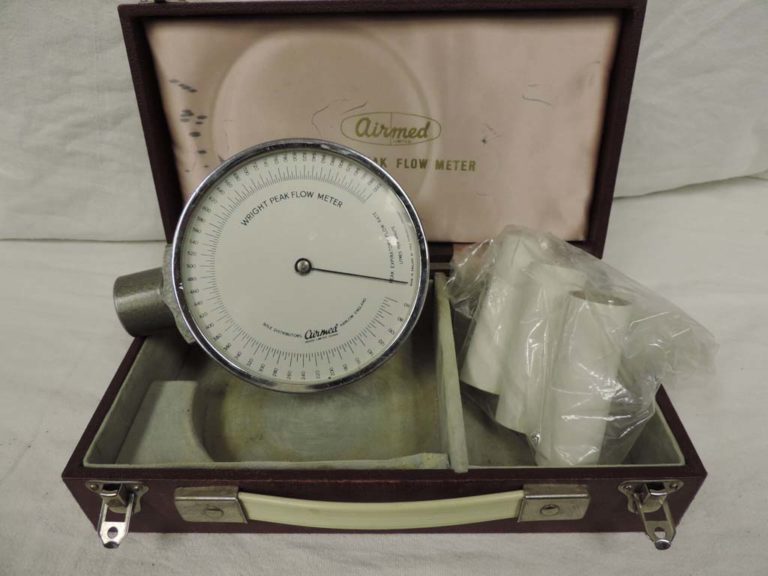
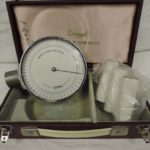
Airmed Wright Peak Flow Meter
A Wright Peak Flow Meter and carrying case by Airmed is shown.
Image from Gregory Rittenhouse
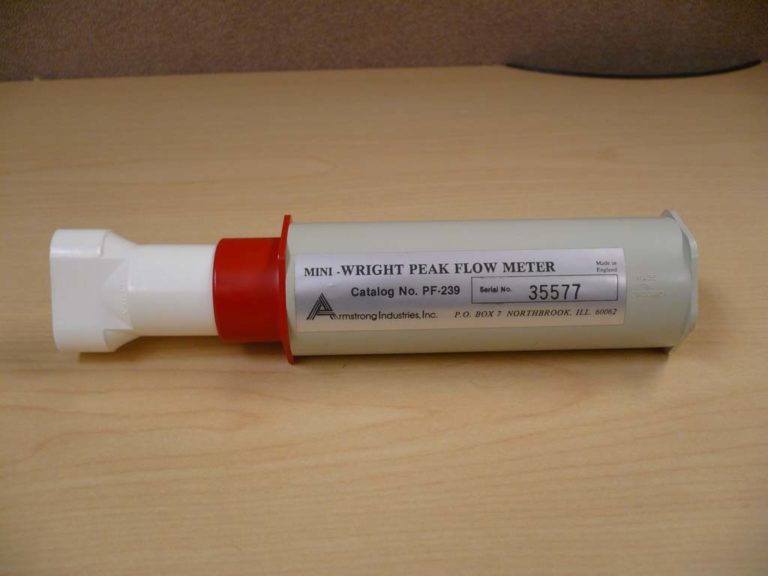
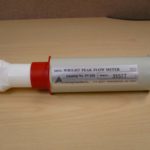
Mini-Wright Peak Flow Meter
The Mini-Wright Peak Flow Meter is shown.
Image from Angela Eaton
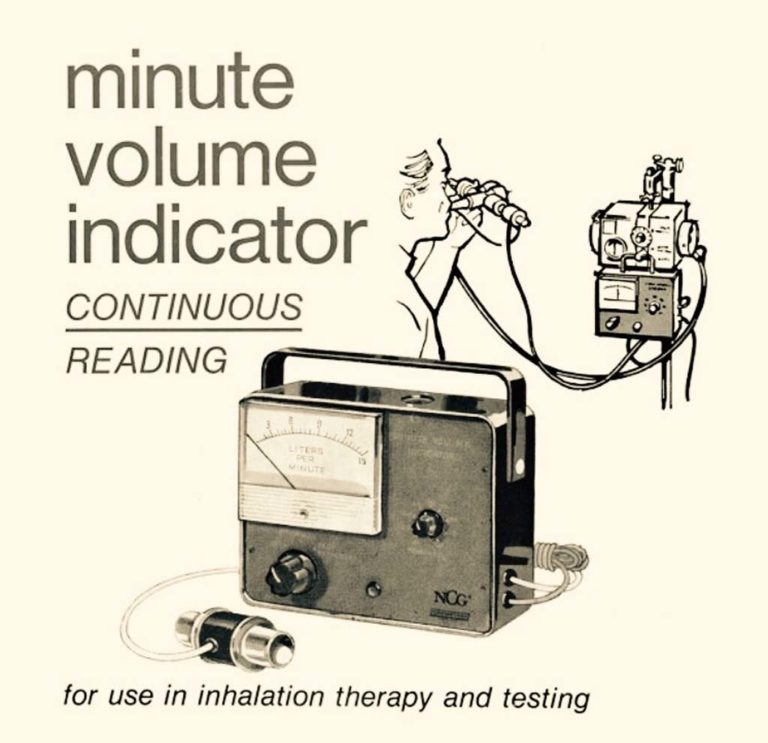
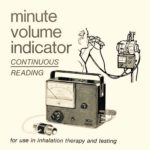
NCG MV Indicator
This ad for the NCG Minute Volume Indicator appeared in the December 1968 issue of the INHALATION THERAPY journal.
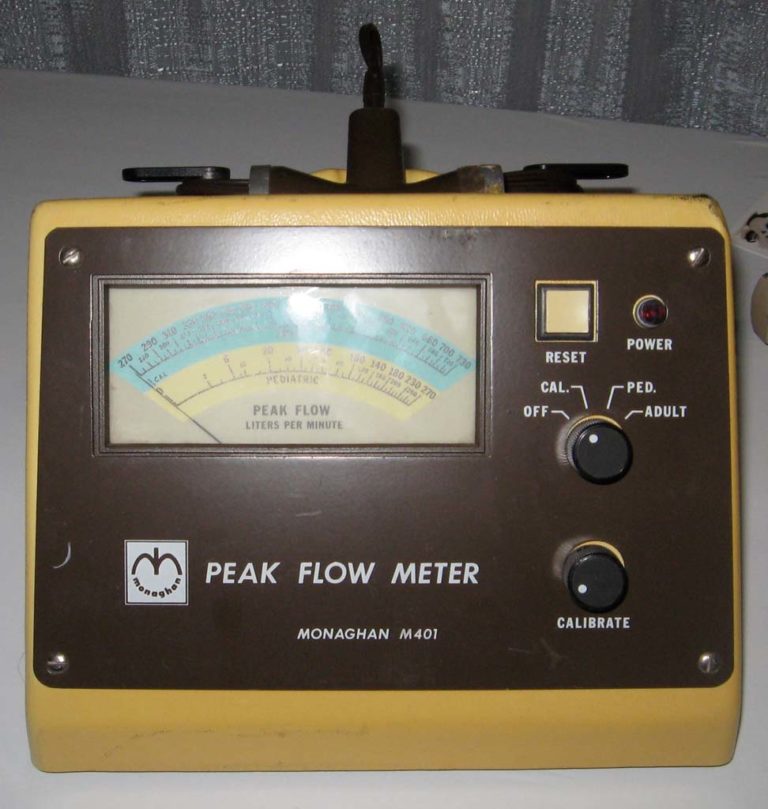
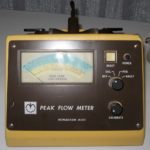
Monaghan M401
The Monaghan M401 Peak Flow Meter is shown.
Image from James Sullivan
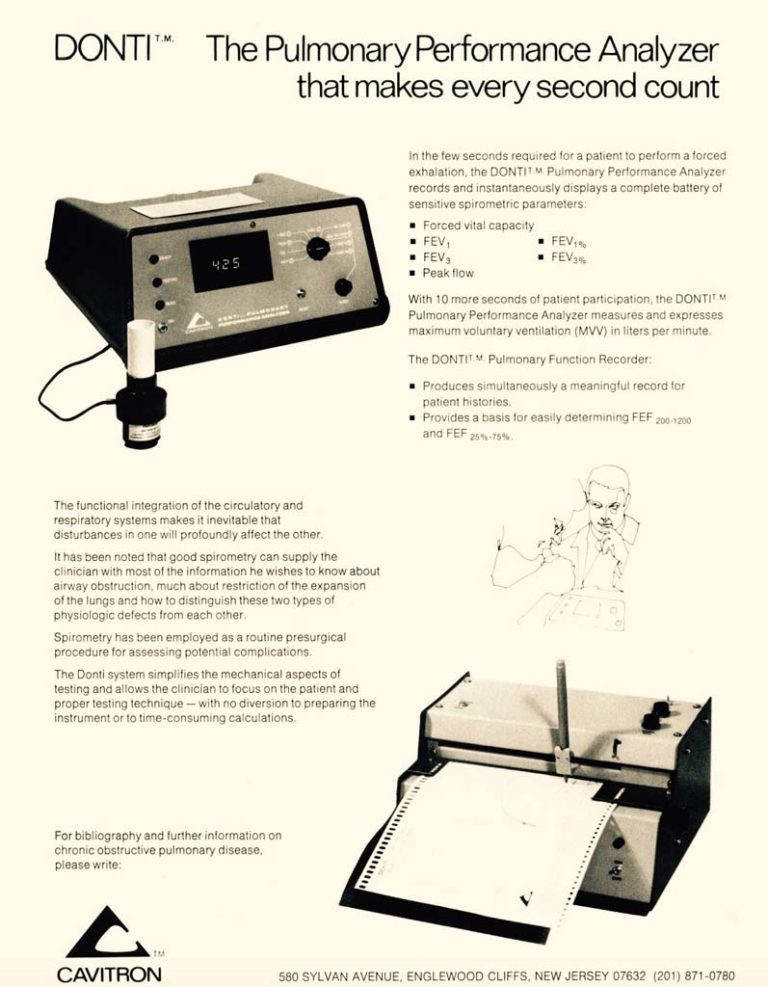
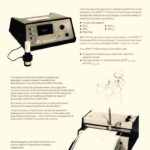
1974 Donti ad
The Donti Pulmonary Performance Analyzer by Cavitron is shown in this 1974 ad. The device was used to assess FVC and MVV maneuvers.
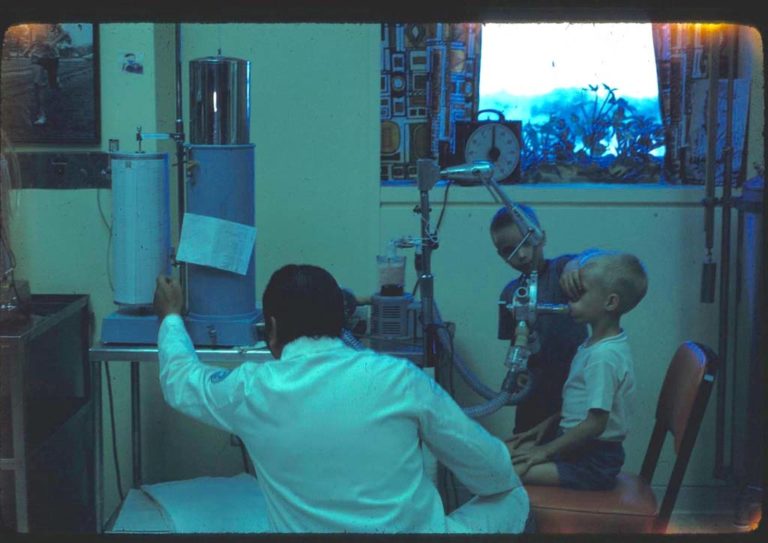
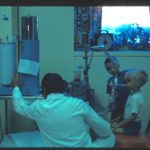
Pediatric PFT
Using a water seal spirometer to perform spirometry on a pediatric outpatient. Notice the unique "noseclip".
Image from Marvin Lough
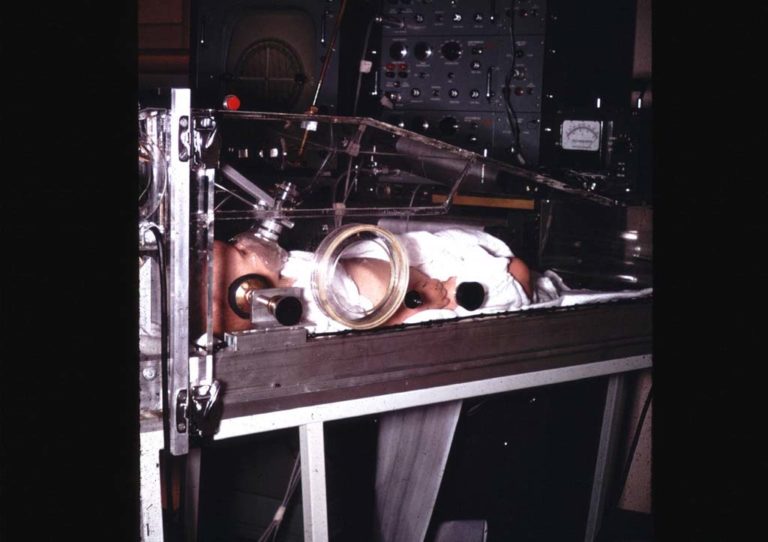
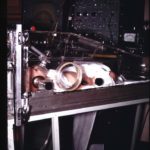
Pediatric PF Testing
Performing pulmonary diagnostics on an infant.
Image from Marvin Lough
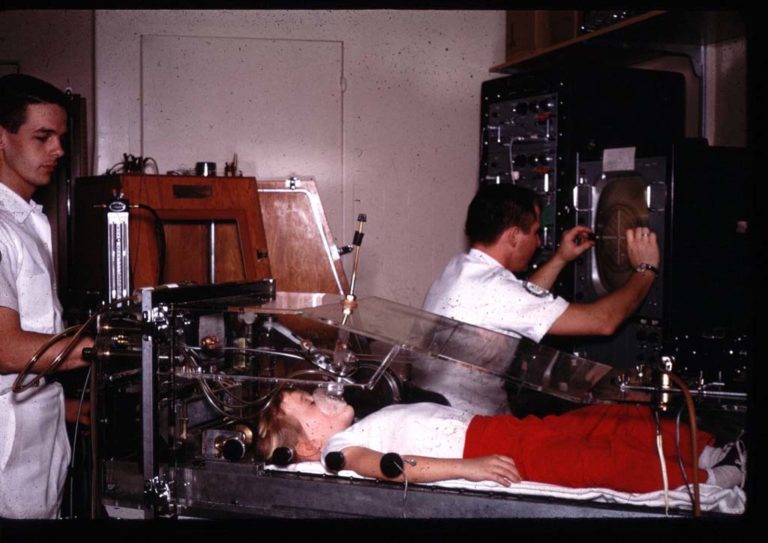
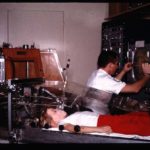
Pediatric PF Testing
Testing pulmonary mechanics on a pediatric patient at Rainbow Babies and Children's Medical Center.
Image from Marvin Lough
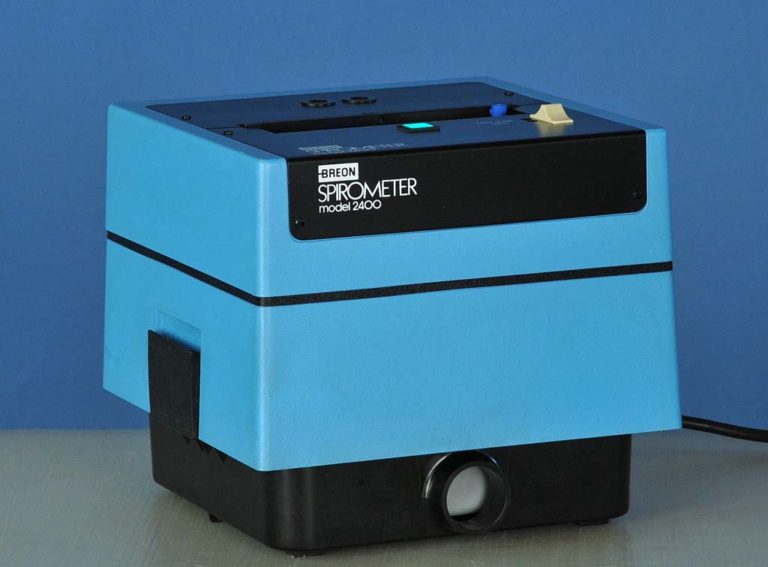
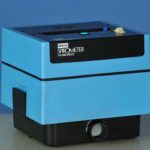
1980s Breon 2400
The Breon 2400 was often used for pulmonary screenings in medical offices, clinics, and public health screening programs.
Image from Tony Ruppert
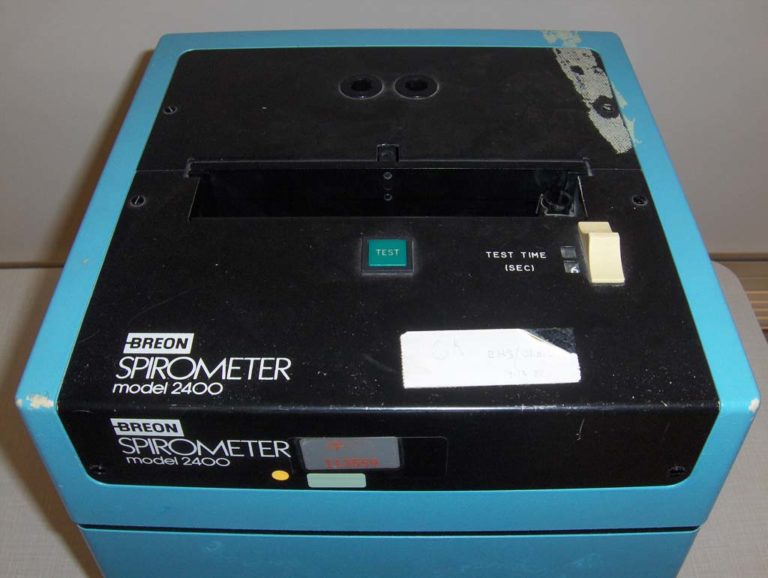
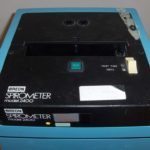
Breon 2400 Spirometer
The top view of the Breon 2400 from the 1980s is shown.
Image from Tony Ruppert
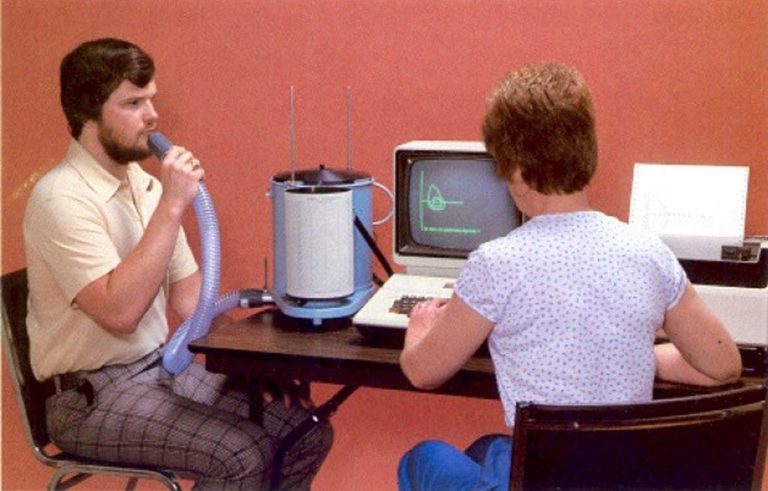
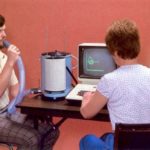
Computerized PF Graphics
A PF system with computerized graphics is shown in this 1980s photo.
Image from James Sullivan
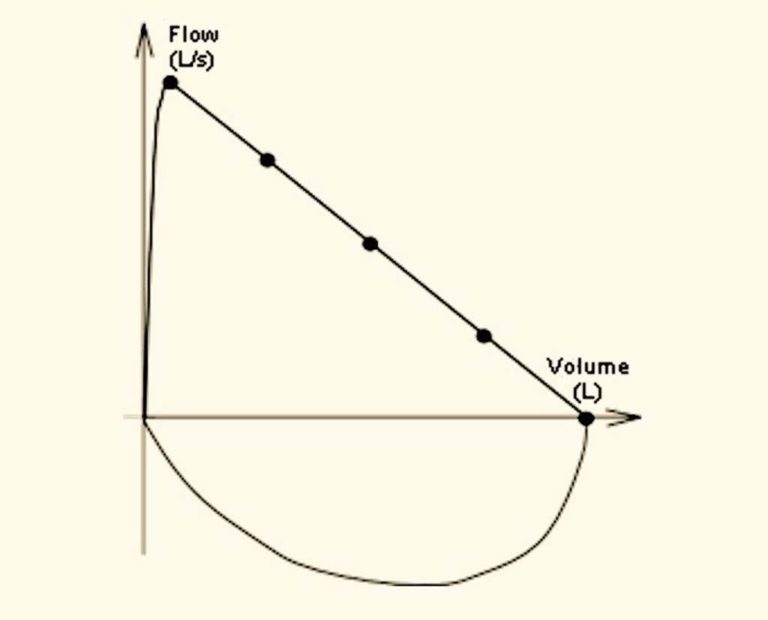

Flow-Volume Loop
An example of a flow-volume loop is shown.


Images to share?
Contact us to images to contribute for this gallery.